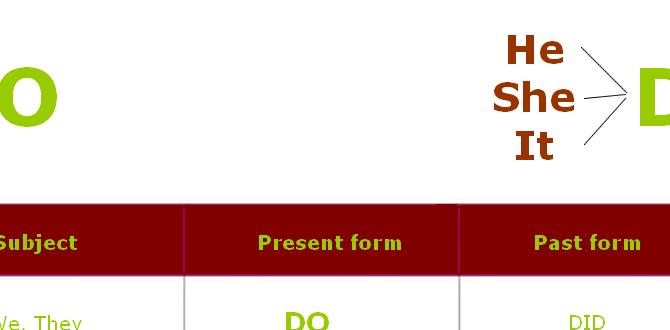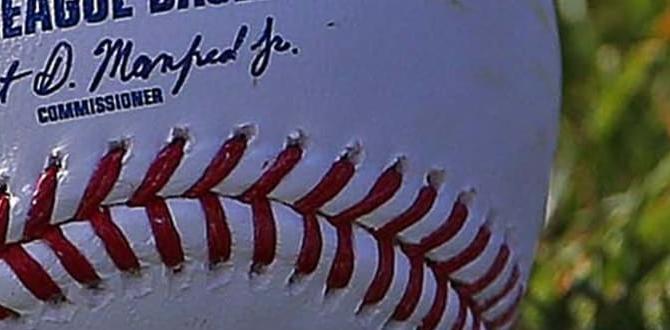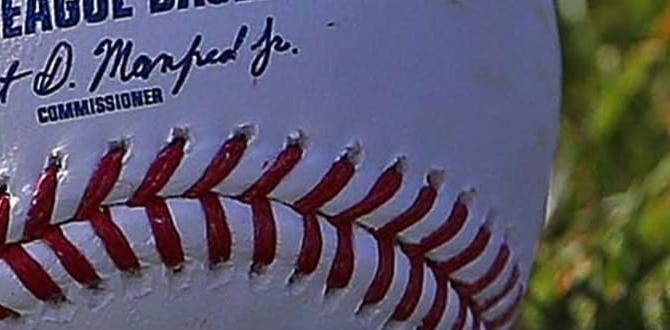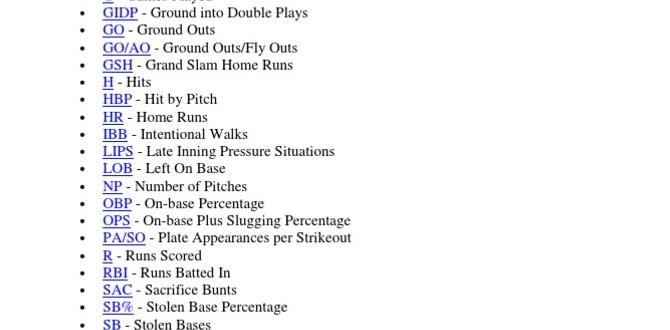Have you ever watched a baseball game and heard fans talking about numbers? One of those numbers is OPS. But what does OPS stand for? It’s a term that many fans use, but not everyone knows what it means.
OPS stands for On-base Plus Slugging. It’s a stat that helps show how good a player is at getting on base and hitting for power. Imagine a player who can hit home runs and also get walks. This is where OPS shines!
Here’s a fun fact: OPS can help you compare players, much like comparing your favorite superheroes. Each player has their own skills, just like each superhero has unique powers.
So, in this article, we will dive deeper into OPS. You will learn why it’s so important in baseball. By the end, you’ll be able to impress your friends with your baseball knowledge!
Baseball: What Does Ops Stand For And Its Importance?
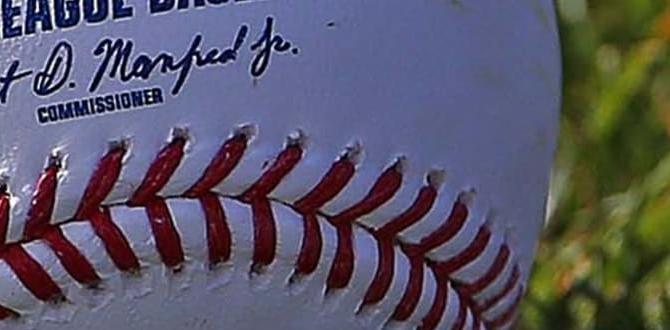
What Does OPS Stand For in Baseball?
OPS stands for On-Base Plus Slugging, a key baseball statistic. It combines two important aspects of a player’s performance: on-base percentage and slugging percentage. A high OPS means a player is good at getting on base and hitting for power. Did you know that some of the best hitters in MLB history had OPS scores over 1.000? Tracking OPS can help fans understand which players impact the game the most. It’s a fun way to measure baseball success!Understanding OPS: Definition and Importance
Explanation of OPS (Onbase Plus Slugging). Importance of OPS in evaluating player performance.OPS stands for On-base Plus Slugging. It measures a player’s ability to reach base and hit for power. This number is important because it gives a clear picture of a player’s overall performance in games. The higher the OPS, the better the player is at helping their team score runs.
- On-Base Percentage (OBP): How often a player gets on base.
- Slugging Percentage (SLG): Measures a player’s power in hitting.
OPS combines these two stats. It is useful for comparing players. Coaches and fans often use OPS to see who can help their team the most!
What makes OPS important?
The best players usually have high OPS scores. A player with an OPS over .800 is often seen as very good. This score helps teams decide on players during trades or drafts.
Historical Background of OPS
Origin of OPS in baseball statistics. Evolution of its use over the years.OPS, or On-base Plus Slugging, started in the 1980s. It combines two important stats: on-base percentage and slugging percentage. OPS helps fans see how well a player hits and gets on base. Over the years, it became popular among players, coaches, and fans alike. Today, many teams use it to evaluate players, making OPS a key part of baseball stats.
What is the origin of OPS in baseball statistics?
The term OPS was first used in 1984. Analysts wanted a clear way to measure offensive performance. This made it easier for everyone to understand a player’s contribution to the game.
How has OPS evolved over the years?
- In the 1990s, it gained popularity among fans.
- In the 2000s, more teams adopted it as a key performance metric.
- Today, OPS influences player trades and contracts.
Components of OPS
Breakdown of Onbase Percentage (OBP). Breakdown of Slugging Percentage (SLG).Understanding OPS in baseball starts with two key parts: On-Base Percentage (OBP) and Slugging Percentage (SLG). OBP measures how often a player gets on base. This includes hits, walks, and times hit by a pitch. SLG measures the power of a player’s hits, showing how many total bases they earn per at-bat. Together, these stats offer a clear picture of a player’s effectiveness at the plate.
What is On-Base Percentage (OBP)?
OBP is calculated using the formula: (Hits + Walks + Hit by Pitch) / (At Bats + Walks + Hit by Pitch + Sac Flies).
Key Points of OBP:
- Hits: All the times a player gets a hit.
- Walks: When a player is allowed to advance to first base for free.
- Hit by Pitch: When a player is hit by a pitch and reaches base.
What is Slugging Percentage (SLG)?
SLG measures a player’s power by dividing total bases by at-bats.
Key Points of SLG:
- Single: 1 base.
- Double: 2 bases.
- Triple: 3 bases.
- Home Run: 4 bases.
Each number helps fans see how players contribute to their team’s success, making baseball even more exciting!
How to Calculate OPS
Stepbystep calculation of OPS. Examples of OPS calculations using player statistics.Calculating OPS is easy and fun! First, you add a player’s on-base percentage (OBP) and slugging percentage (SLG). Think of it like mixing your favorite flavors of ice cream. If a player has an OBP of .300 and an SLG of .400, you simply add them together: .300 + .400 = .700. Ta-da! Their OPS is .700. Here’s a quick example with a table:
| Player | OBP | SLG | OPS |
|---|---|---|---|
| Player A | .300 | .400 | .700 |
| Player B | .280 | .450 | .730 |
So, the next time someone talks about OPS, you can impress them with your math skills! Remember, combining those two stats shows how well a player contributes to their team. Who knew math could be this fun?
OPS vs. Other Statistical Metrics
Comparison of OPS with batting average. Comparison with other metrics like WAR (Wins Above Replacement).OPS is like the popular kid at school, stealing the spotlight from traditional stats like batting average. While batting average only shows hits, OPS measures a player’s on-base and slugging skills. This makes OPS more telling about a player’s true performance. Now, let’s throw WAR (Wins Above Replacement) into the mix. WAR is like the superhero of baseball stats, showing how much a player contributes to their team. But comparing OPS with WAR is tricky because they measure different things. Still, OPS gives a quick snapshot of talent. It’s like comparing apples to, well, home runs!
| Metric | Description |
|---|---|
| Batting Average | Measures hits per at-bat. Hits are great, but small snacks don’t fill you up! |
| OPS | Combines on-base and slugging percentage. Two stats are better than one! |
| WAR | Estimates player’s total contributions to the team. The ultimate “how much do you help?” score! |
OPS in Modern Baseball Analysis
Role of OPS in modern sabermetrics. How teams use OPS for player evaluations and strategies.OPS, or On-base Plus Slugging, is essential in understanding baseball today. It combines how often players get on base and how well they hit for power. Teams love OPS because it helps them evaluate players and make smarter strategies. For example, a high OPS means a player is valuable. Teams can spot stars and understand who to keep or trade. They can analyze game stats and adjust tactics like a chess game, but with more peanuts!
| OPS Range | Performance Level |
|---|---|
| Under .600 | Below Average |
| .600 – .800 | Average |
| .800 – .900 | Good |
| Over .900 | Great |
Limitations of OPS
Criticisms regarding OPS as a standalone metric. Situations where OPS may not tell the full story.OPS has some limitations. It can be misleading and doesn’t tell the whole story. For example, players might have high OPS but struggle against certain pitchers. Here are some points to consider:
- OPS doesn’t show how well a player runs the bases.
- It ignores players’ defensive skills.
- Situations with runners on base can affect a player’s performance.
- A player’s OPS can also change based on their position in the lineup.
Always look beyond OPS for a complete picture of a player’s skills.
What does OPS not measure?
OPS does not measure a player’s defense, base running, or ability to perform in clutch situations. It focuses only on hitting and does not give the full view of a player’s overall game.
Case Studies: Players with High and Low OPS
Examples of players with high OPS and their impact. Examples of players with low OPS and factors contributing to it.Some players shine with a high OPS. OPS means On-base Plus Slugging. High OPS players are great hitters. For example, Babe Ruth had an OPS of .948. His power and hits helped his team win. On the other hand, players with low OPS face challenges. They may struggle with hitting or get fewer chances. For example, a player might have an OPS of .600 due to poor hitting skills. Injuries and tough competition also matter.
Who are some players with high and low OPS?
Some players known for high OPS include Babe Ruth and Mike Trout, while low OPS examples are Jeff Mathis and Billy Hamilton.
The Future of OPS in Baseball
Trends indicating changes in the evaluation of players. Potential new metrics that could complement or replace OPS.Baseball is evolving. Teams are starting to look closely at new ways to evaluate players. This includes trends showing that traditional stats may not give the full picture. Some exciting new metrics might come into play. These could help improve how players are measured. For example, metrics like Expected Weighted On-Base Average (xwOBA) might replace or add to OPS. Fans can expect exciting changes!
What are potential new metrics in baseball?
- Expected Batting Average (xBA): This shows what a player should hit based on their contact quality.
- On-Base Plus Slugging (OPS+): This helps rate players in relation to the league average.
- Launch Angle: This measures how steep the ball goes off the bat.
These emerging metrics aim to give a clearer view of a player’s skills. The future of OPS looks bright with these advancements!
Conclusion
In conclusion, OPS stands for On-base Plus Slugging. It helps you understand a player’s offensive skills in baseball. A higher OPS means a player gets on base and hits for power more often. Use OPS to compare players and enjoy the game more! You can learn more by checking player stats next time you watch a game!FAQs
What Is The Formula For Calculating On-Base Plus Slugging (Ops) In Baseball?To find On-base Plus Slugging (OPS) in baseball, you add two numbers together. First, you find On-base Percentage (OBP), which tells how often a player gets on base. Next, you find Slugging Percentage (SLG), which shows how many total bases a player gets. Finally, you just add OBP and SLG to get OPS. So, the formula is OPS = OBP + SLG!
How Does Ops Compare To Other Offensive Metrics Like Batting Average Or On-Base Percentage?OPS stands for On-base Plus Slugging. It adds two important things: how often a player gets on base and how powerful their hits are. Batting average shows how many hits a player gets, while on-base percentage shows how often they reach base. OPS gives a bigger picture of how good a player is at hitting and getting on base. So, it combines everything to show us how great a player really is!
Who Holds The Record For The Highest Ops In A Single Mlb Season?Barry Bonds holds the record for the highest OPS. OPS stands for On-base Plus Slugging. In 2004, he had an OPS of 1.422. That means he got on base and hit really well that year!
Why Is Ops Considered An Important Statistic For Evaluating A Player’S Offensive Performance?OPS stands for On-base Plus Slugging. It helps us see how good a player is at hitting. The higher the OPS, the better the player is at getting on base and hitting the ball hard. We can use this number to compare players and understand who helps their team score more runs. So, OPS is important because it shows a player’s overall offensive skills in one easy number.
How Can Teams Use Ops To Make Decisions About Player Acquisitions And Lineup Construction?Teams can use OPS, which means On-base Plus Slugging, to help them choose players and build lineups. OPS tells us how well a player hits and gets on base. If a player has a high OPS, it shows they are really good at making runs. So, we look for players with high OPS numbers when we want to buy new players or decide who plays in the game. This way, we can make our team stronger and score more points!
{“@context”:”https://schema.org”,”@type”: “FAQPage”,”mainEntity”:[{“@type”: “Question”,”name”: “What Is The Formula For Calculating On-Base Plus Slugging (Ops) In Baseball? “,”acceptedAnswer”: {“@type”: “Answer”,”text”: “To find On-base Plus Slugging (OPS) in baseball, you add two numbers together. First, you find On-base Percentage (OBP), which tells how often a player gets on base. Next, you find Slugging Percentage (SLG), which shows how many total bases a player gets. Finally, you just add OBP and SLG to get OPS. So, the formula is OPS = OBP + SLG!”}},{“@type”: “Question”,”name”: “How Does Ops Compare To Other Offensive Metrics Like Batting Average Or On-Base Percentage? “,”acceptedAnswer”: {“@type”: “Answer”,”text”: “OPS stands for On-base Plus Slugging. It adds two important things: how often a player gets on base and how powerful their hits are. Batting average shows how many hits a player gets, while on-base percentage shows how often they reach base. OPS gives a bigger picture of how good a player is at hitting and getting on base. So, it combines everything to show us how great a player really is!”}},{“@type”: “Question”,”name”: “Who Holds The Record For The Highest Ops In A Single Mlb Season? “,”acceptedAnswer”: {“@type”: “Answer”,”text”: “Barry Bonds holds the record for the highest OPS. OPS stands for On-base Plus Slugging. In 2004, he had an OPS of 1.422. That means he got on base and hit really well that year!”}},{“@type”: “Question”,”name”: “Why Is Ops Considered An Important Statistic For Evaluating A Player’S Offensive Performance? “,”acceptedAnswer”: {“@type”: “Answer”,”text”: “OPS stands for On-base Plus Slugging. It helps us see how good a player is at hitting. The higher the OPS, the better the player is at getting on base and hitting the ball hard. We can use this number to compare players and understand who helps their team score more runs. So, OPS is important because it shows a player’s overall offensive skills in one easy number.”}},{“@type”: “Question”,”name”: “How Can Teams Use Ops To Make Decisions About Player Acquisitions And Lineup Construction? “,”acceptedAnswer”: {“@type”: “Answer”,”text”: “Teams can use OPS, which means On-base Plus Slugging, to help them choose players and build lineups. OPS tells us how well a player hits and gets on base. If a player has a high OPS, it shows they are really good at making runs. So, we look for players with high OPS numbers when we want to buy new players or decide who plays in the game. This way, we can make our team stronger and score more points!”}}]}
